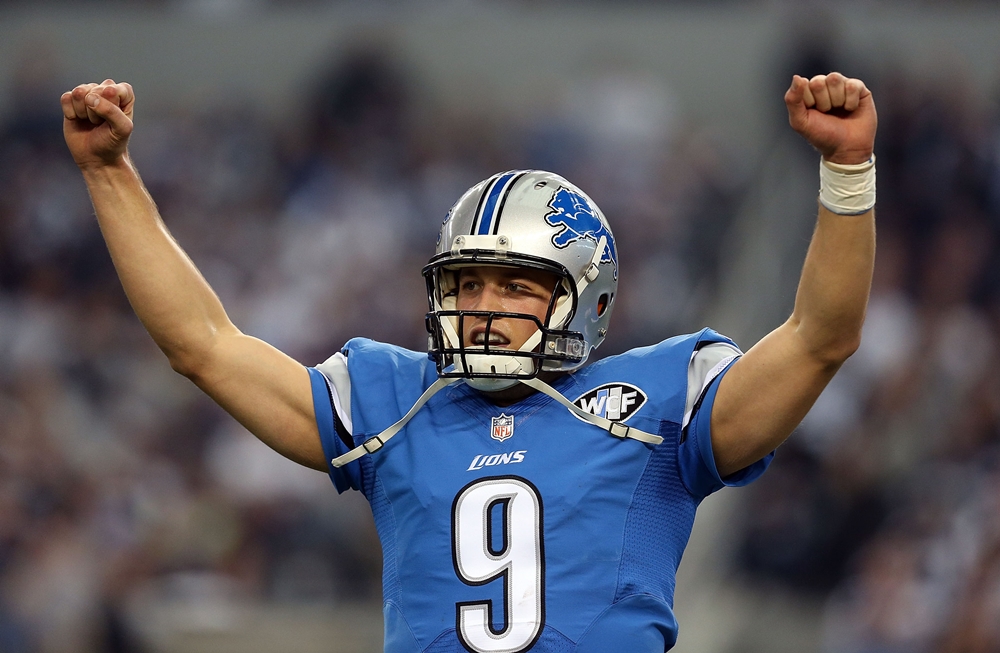
It’s been a decade now since I realized that most people who play fantasy football don’t understand offensive (or defensive) systems. When I say “systems” it basically means the goals of the offense (or defense). My simple philosophy on this as it pertains to fantasy is if a team doesn’t want a certain player to touch the ball or to score a touchdown, why should we?
An example of this is Detroit Lions quarterback Matthew Stafford. Stafford has been widely considered a top-5 fantasy quarterback the past few years. This was due to the Lions high volume passing attack under former head coach Jim Schwartz and offensive coordinator Scott Linehan. In 2012 the Lions led the league in pass attempts (740 total, 46 per game). In 2013 they fell to fifth in the league in pass attempts (634 total, 40 per game). This obviously led to some great passing yard totals for Stafford, as he racked up 4,967 yards in 2012 (2nd in NFL) and 4,650 in 2013 (3rd in NFL). Last year the Lions passed less, airing it out 604 times (37 per game), which was a major factor in Stafford recording his lowest full season passing total of his career at 4,257 yards. Thus, Stafford dropped out of the top 10 of fantasy QBs for the first time since his injury plagued season of 2010.
Knowing the system that each team runs will help you determine the type of numbers players will put up. Specifically it helps us project rookies and players that have switched teams in the offseason. In last year’s Draft Guide, we projected Golden Tate’s numbers coming over from the low passing Seahawks to the Lions at around 88-1,239-7. Tate finished his first year in Detroit with 99-1,331-4. This year we’re looking at a much worse fate for the likes of Jeremy Maclin of the Chiefs based on the downgrade in offensive system.
You can also use this information in determining how a certain style of player will fit into a specific offensive (or defensive) system. The biggest impact here is at the running back position. Were you surprised by Justin Forsett’s breakout in 2014 after seven seasons in the NFL? We weren’t. Gary Kubiak came to Baltimore and installed his tried and true cut back running system in which Forsett was familiar with from his year in Houston in 2012. Forsett is a great one cut runner and given an opportunity in arguably the best one cut system in the NFL it was no wonder he succeeded.
This knowledge is also extremely useful during the season in determining the strength of matchups. Which defenses stop the run, which fare well against zone blocking, which rush the passer and which create turnovers are extraordinarily important when planning your starting lineups.
So you see, knowledge really is power. The more you understand the game of football and the makeup of each team’s system, the more likely you are able to accurately assess each player’s production year after year.

